Realism, Fiction and the Machine
Experimental Machine-Vehicles (M-Vs) are effective intervention tools to draw out knowledge and stories from a participating public. This is because M-Vs can create a dynamic multiple interplay of realism and fiction within the everyday performance of the city- the triangulation of Realism, Fiction and the Machine. The experience of realism and fiction exists in all aspects of life. Everyday we continuously engage with fiction and realism in deliberate and unconscious ways. Questions emerge regarding the nature and efficacy of the realism to fiction mix across a range of categories of experience. Although difficult to quantify at this point in time, it appears that different categories of activity are best facilitated by their own particular mix of realism and fiction. Further, the productivity of this mix appears to be maximised when the fiction component is at its strongest and simultaneously the realism experienced is also at its most dependable best. It also appears that there are a number of integrating or facilitating factors that influence the take up of this reality/fiction mix. These range from the generality of the environment in which the experience is taking place, to the specifics of M-Vs that are employed to generate actions and reactions. M-Vs can be used to facilitate greater knowledge (realism/data) and stories (fiction/unconscious) from a place/location, exposing, amplifying, intervening with and energising this reciprocal relationship between realism and fiction in the city.



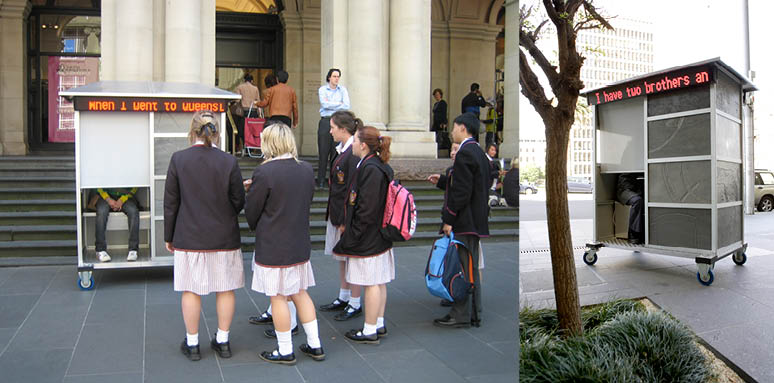
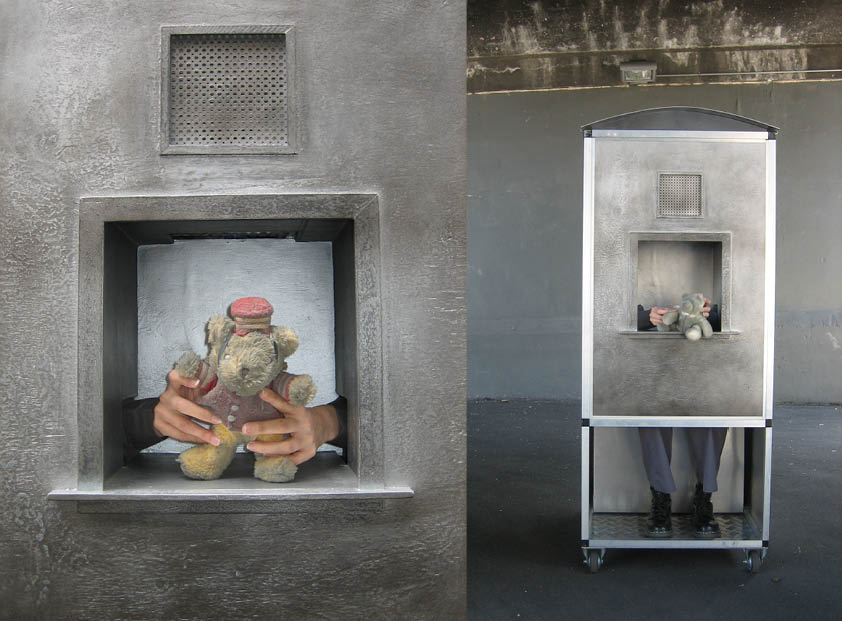
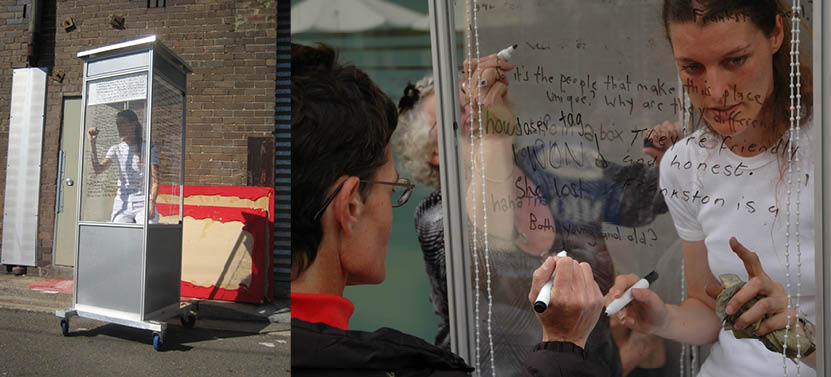

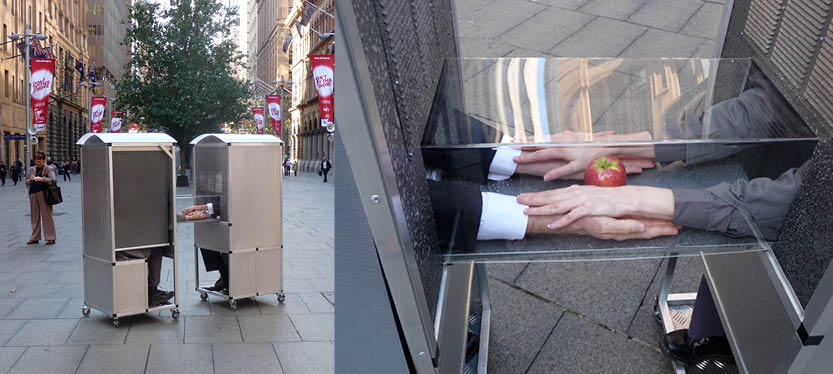
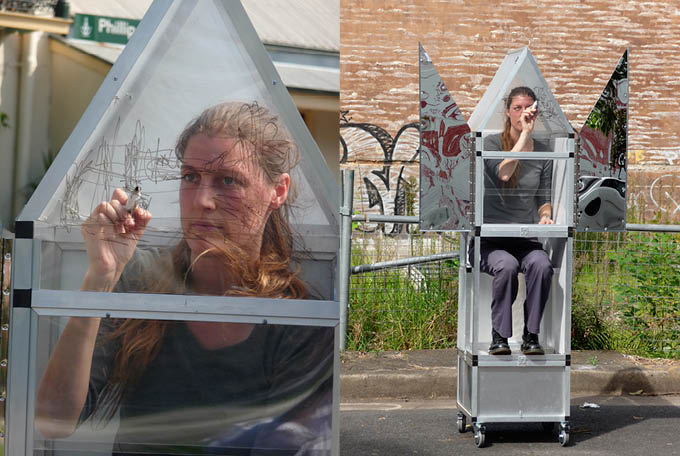
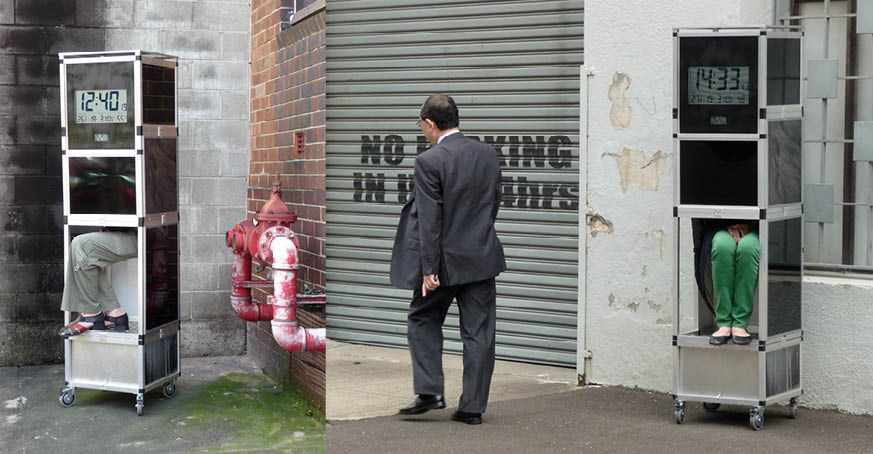
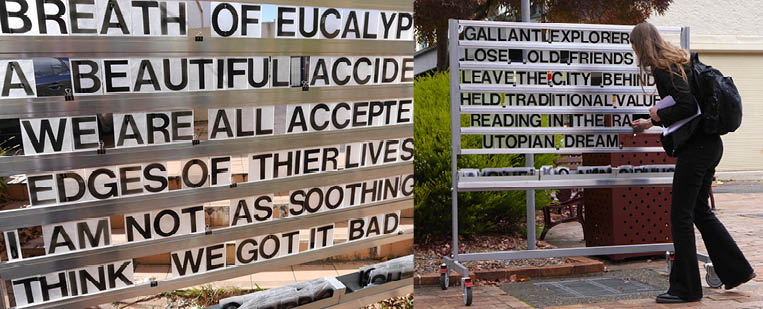
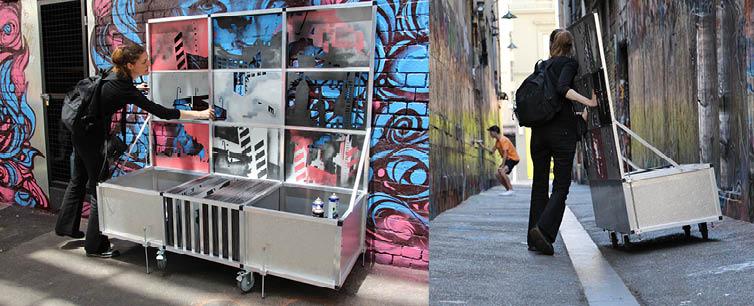
Astra, thank you for sharing your practice with M-Vs. I find your approach (of creating an interplay between reality and fiction) really fascinating and clearly illustrated in the images of the machines. I would like to read further, though, an example of how one or two of the machines generated a certain situation; I can imagine they are not all the same, nor generate the same reaction. I would also like to know if the machines are tailor made for a specific context or if they may be customized to fit a given situation (e.g. are the choices of a marionette theatre or a clock context-driven?).
Pablo- Thank you for your interest. The M-Vs are designed to either generate a particular response, or to glean certain data/stories from a location. Some M-Vs are designed specifically for one location and others are designed to be responsive to various places.
For example, the ‘Surveillance with Public Intent Vehicle’ (M-V03 SPIV) was commissioned by Frankston City Council to address specific urban design and social issues in the city. It was also commissioned by the Queensland Department of Communities, Office for Seniors, to generate a response to particular questions about the ageing population in Brisbane. The data derived was then used to develop social policy strategies.
Alternatively, the ‘Heightened Drawing Platform’ (M-V06 HDP) was inspired in its design by the tall, slender, weathered vaults in Père Lachaise cemetery in Paris, as well as by 13th Century Byzantine icon imagery. It was positioned in a contentious neighbourhood in Sydney that is transitioning from being a very poor area, to a desirable gentrified location. Drawing out these features, the M-V encouraged locals to discuss and debate their experiences.
I have identified twelve defining characteristics that make the fictional/functional M-V work effectively. These aspects can be manipulated to purpose build M-Vs that will respond to specific locations, or to address particular subject matters, or to do both.
Wow. These photos! I am very intrigued. Aesthetically the M-Vs are intoxicating and alluring. They do not fall into the trap of overly whimsical or fantastical when engaging in the fictitious. Quite the opposite, these appear to be deadly serious albeit unnerving. Do you have any documentation of what users experience from these? What sensations are incited or types of relationships emerging? What do you do with the stories and knowledge that is produced?
Hi Michael.
Yes, the experience of members of the public engaged with the M-Vs is recorded through video and photo documentation as well as through text, sound and other techniques depending on the form and intention. I have a comprehensive catalogue of all previous M-V, Test Vehicle and other AR/P works, including stories/data from those directly engaged as well as passers-by. On some occasions this information is fed directly back to the public, for example, via a live LED screen in ‘CITYtalking’ (M-V01 CT), whereas in other situations, government departments have used the information for prospective urban design or social policy initiatives.
One of the most engaging aspects of the presence of M-Vs is their ambiguous nature, ambiguous in the sense of an uncertain, unknown relationship between their form and function. Disbelief of the inexplicable is countered by the purposeful crafting of industrial materials used to construct the forms. Disquiet about the opaque surfaces is amplified by the strong clues indicating there is a body within.
Somewhat counter-intuitively, personal and quite intimate responses are often generated from these seemingly hard-edged anonymous M-V forms. Disabling the normal means of communication through the barrier mechanism, elicits this type of direct and honest response. By channelling communication singularly, limiting other sensory queues and responses, interaction becomes more focused and the experience more intense.
For example, in the ‘Feeling Cities – Public Contact Vehicle’ (M-V05 FCPCV) work, a very intimate experience was created through the single act of touch between two strangers. Some members of the public engaged for just a few minutes, whereas others stayed for up to an hour. One person brought an apple into the connecting tube creating an unfolding tactile narrative, whereas another person quite unexpectedly introduced a knife.
Another example was when a man writing directly on the outside of the ‘Surveillance with Public Intent Vehicle’ (M-V03 SPIV) mentioned that he was deaf. The other people around him and myself were not aware of this, as we were all writing to each other in silence. By chance, an hour or so later, another man involved in the discussion mentioned that he was deaf. At around the same time, I noticed that the original man had returned to watch at a distance, so I introduced them (via reverse writing) to one another. It was a special moment to see these two strangers sign together and then wander off down the street in what appeared to be a very lively (albeit silent) conversation. This is when the M-V works at its best, as a catalyst to connect people and as a means by which discussion and debate can be provoked about issues affecting the city.